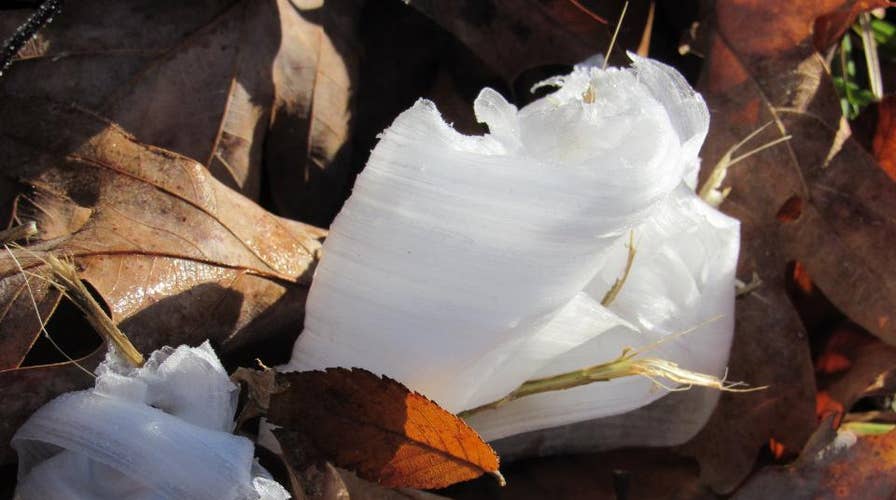South Carolina battlefield covered in a phenomenon known as ‘hair ice’
A mysterious phenomenon known as ‘hair ice’ has covered the Mustgrove Mill historic battlefield.
A wispy, white substance was recently spotted at a historic site in South Carolina, leading some to believe the objects were pieces of trash. But this cotton candy-looking material was actually an unusual frost formation known as “hair ice,” the South Carolina State Parks announced Thursday.
“This frost occurrence happens during humid winter nights when the temperature drops just below the freezing point. The textures and forms are a result of the fungus Exidiopsis effusa,” the South Carolina State Parks explained on Facebook.
GIANT SPIDER WEB STRETCHES 1,000 FEET ACROSS LAGOON: THEY'RE HAVING 'A PARTY'
Photos of the hair ice, also known as “ice flowers,” were captured by a park ranger at Musgrove Mill, the site of a Revolutionary War battle in August of 1780.
The fungus responsible for these odd shapes was only recently determined; a study released in 2015 by the European Geosciences Union announced the fungus Exidiopsis effusa was the “missing ingredient” that gives hair ice its “peculiar shape,” the German and Swiss scientists who made the discovery wrote.
The scientists concluded these silky ice filaments are a result “ice segregation,” and noted “the same amount of ice is produced on wood with or without fungal activity, but without this activity, the ice forms a crust-like structure,” Christian Mätzler, a study co-author, said in a statement at the time.
Mätzler added the fungus helps the ice to “form thin hairs,” which have a diameter of roughly 0.01 mm, or 0.0004 inches, he said. The substance is able to keep its shape “over many hours” with close to freezing temperatures.

The fungus responsible was discovered in 2015 by scientists in Germany and Switzerland. (South Carolina State Parks)
A scientist named Alfred Wegener was the first to study hair ice in 1918 and, at the time, hypothesized the fungus was a key component in the formation of the unusual shapes. But the reasoning behind the “rare and fleeting” phenomenon was hard to confirm for just that reason, Gisela Preuß, a biologist who contributed to the study, explained at the time.
“Hair ice grows mostly during the night and melts again when the sun rises. It’s invisible in the snow and inconspicuous in hoarfrost,” Preuß said, noting it is typically seen in “broadleaf forest at latitudes between 45 and 55 degrees North.”
The images posted by the South Carolina State Parks garnered thousands of reactions and shares — many writing comments in awe of the icy creations.
STRANGE BLACK 'POUCHES' WASHING UP ON CAROLINA BEACHES AREN'T 'PIECES OF PLASTIC,' OFFICIALS SAY
“Lived in SC all my life, 70 years, and have never seen this. Thank you for sharing,” one person wrote.
“So cool! We homeschool and this just gave us some great material to research more for science today!” another added.
“Never heard of this. How cool,” a third commented.





















